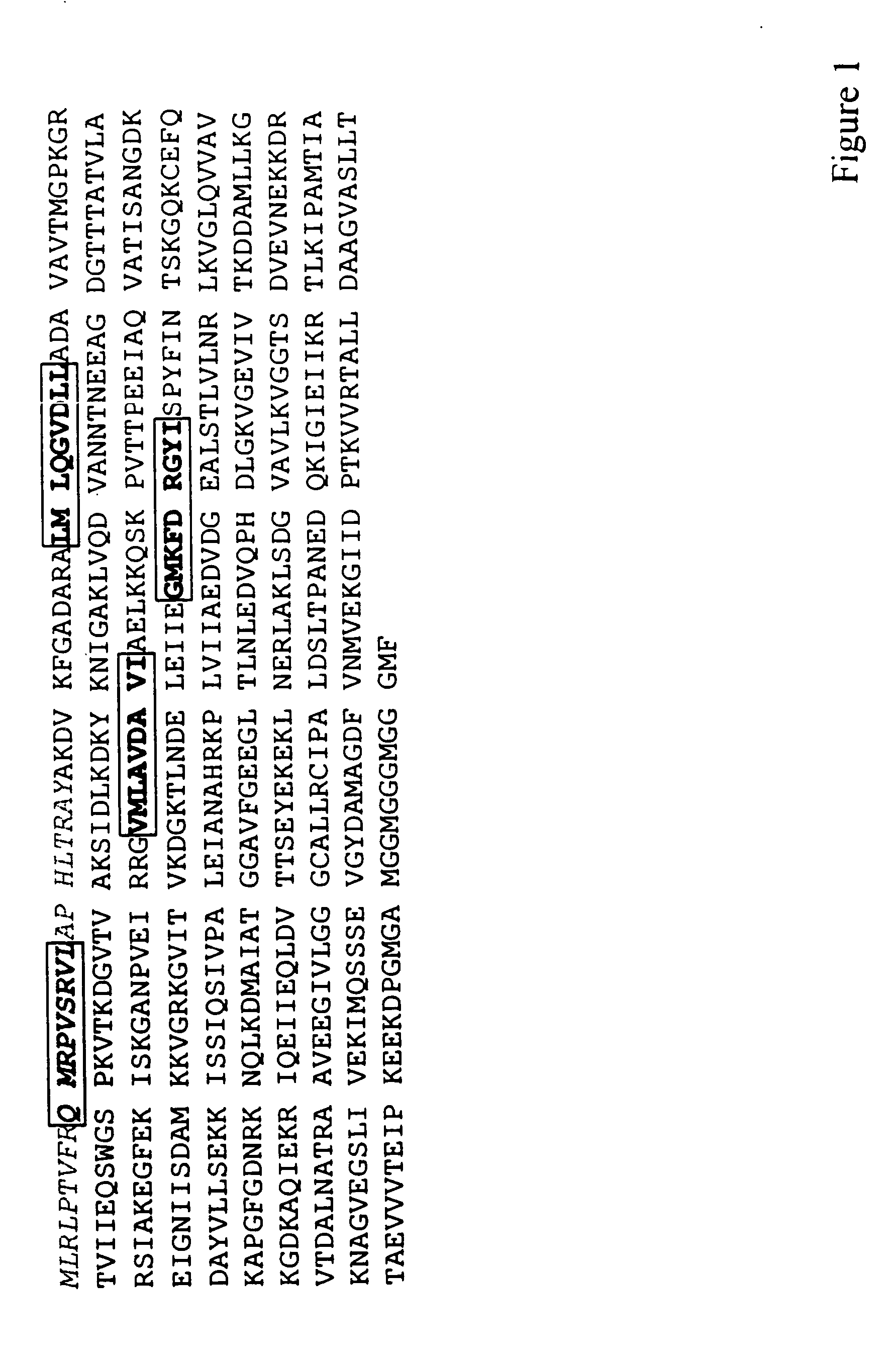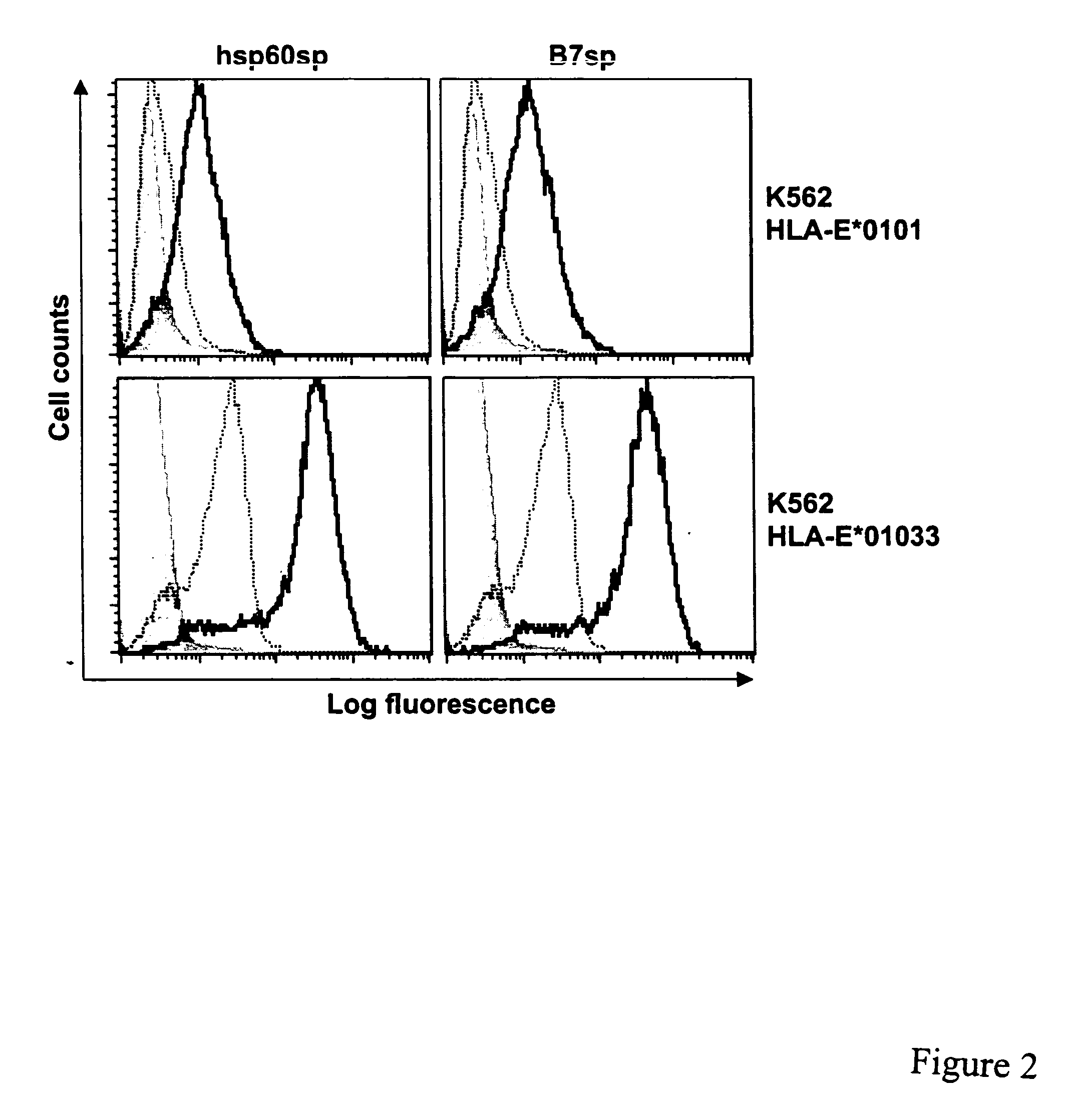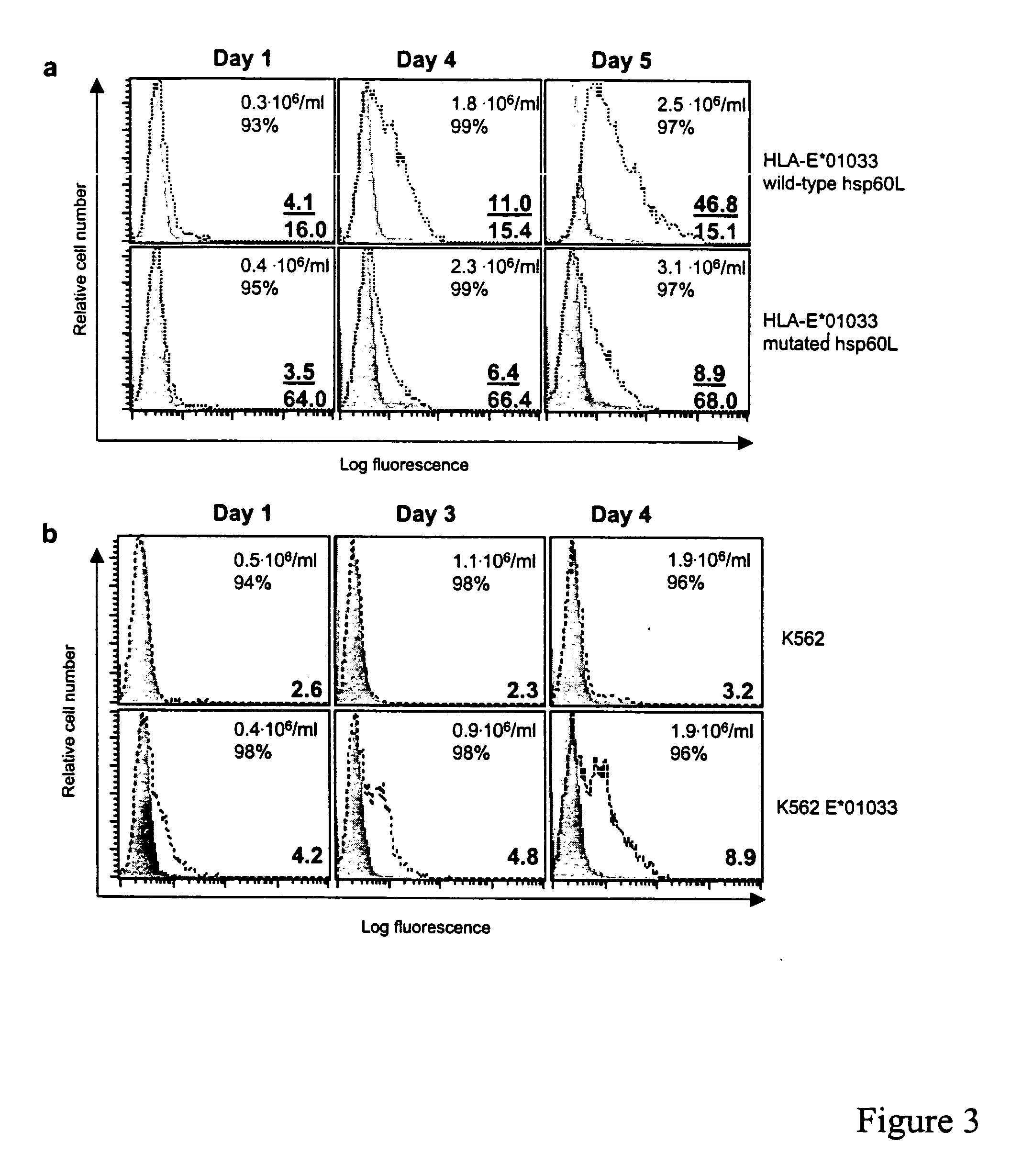Compositions and methods for modulation of immune responses
a technology of immune response and composition, applied in the field of composition and method for modulating immune response, can solve the problems of non-conservative modification of native amino acid residues, substantial increase in half-life, and based release technology is the activity loss of therapeutic molecules,
- Summary
- Abstract
- Description
- Claims
- Application Information
AI Technical Summary
Problems solved by technology
Method used
Image
Examples
example i
[0200] Hsp60sp Stabilizes HLA-E Sell Surface Expression
[0201] To identify peptides derived from human hsp60 with a potential to bind HLA-E, the full length amino acid sequence of hsp60 was scanned for peptides displaying an HLA-E permissive motif (methionine at position 2 followed by either a leucine or isoleucine at position 9 at the C-terminus). Among four such peptides identified (FIG. 1; Table 3), one (QMRPVSRVL (SEC ID NO: 2), designated hsp60sp) was initially selected based on its location within the hsp60 leader sequence. In addition, hsp60sp not only bears a methionine at position 2 and a leucine at position 9, but also shares amino acids at position 4 and 8 in common with some peptides known to efficiently bind to HLA-E (Table 1). In particular, four out of the nine amino acids in hsp60sp are shared with some peptides found in HLA class I leader sequences (e.g., HLA-A*0201, and -A*3401, Table 1).
[0202] peptide and HLA-E interactions have demonstrated that the presence of ...
example ii
[0204] Hsp60 Signal Peptide Gains Access to HLA-E Intracellularly and HLA-E / hsp60sp Levels are Up-Regulated During Cellular Stress
[0205] Hsp60 is a mitochondrial matrix protein, which is encoded within the genomic DNA (Bukau et al., Cell 923:351, 1998; Itoh et al., J. Biol. Chem. 270:13429, 1995, each incorporated herein by reference). It is synthesized as a precursor protein with an N-terminal mitochondrial targeting sequence consisting of 26 amino acids (hsp60L, see FIG. 1). Biochemical studies have established that cleavage of the hsp60L requires import of the precursor protein into the mitochondrial matrix, and that this cleavage is unlikely to occur in the cytosol, since no mitochondrial import of hsp60 is observed in the absence of the hsp60L (Singh et al., Biochem. Biophys. Res. Commun. 1692:391, 1990, incorporated herein by reference). The final destination for the hsp60L after its cleavage is unknown. Upon stress, hsp60 is regulated by increased transcription as well as by...
example iii
[0210] HLA-E Mediated Presentation of hsp60sp Abrogates Recognition by CD94 / NKG2A and CD94 / NKG2C Receptors
[0211] The inhibitory lectin-like receptor heterodimer CD94 / NKG2A is present on approximately 50% of all NK cells in the peripheral blood both in humans and mice. This HLA-E specific receptor mediates a negative signal upon binding to HLA-E presenting various protective HLA-class I signal peptides, which results in the inactivation of NK cell effector functions. In a similar fashion, Qa-1b in complex with a permissive MHC class I leader peptide is efficiently recognized by murine CD94 / NKG2A receptors, suggesting evolutionary conservation in human and mice at both receptor and ligand levels. To characterize possible NK cell receptors that interact with HLA-E in complex with hsp60sp or MHC class I signal peptides, studies were designed to determine whether MHC tetrameric complexes could bind CD94INKG2 receptors expressed on transfectants and NK cells. Recombinant soluble HLA-E mo...
PUM
| Property | Measurement | Unit |
|---|---|---|
| concentration | aaaaa | aaaaa |
| heat shock | aaaaa | aaaaa |
| biocompatible | aaaaa | aaaaa |
Abstract
Description
Claims
Application Information
 Login to View More
Login to View More - R&D
- Intellectual Property
- Life Sciences
- Materials
- Tech Scout
- Unparalleled Data Quality
- Higher Quality Content
- 60% Fewer Hallucinations
Browse by: Latest US Patents, China's latest patents, Technical Efficacy Thesaurus, Application Domain, Technology Topic, Popular Technical Reports.
© 2025 PatSnap. All rights reserved.Legal|Privacy policy|Modern Slavery Act Transparency Statement|Sitemap|About US| Contact US: help@patsnap.com



